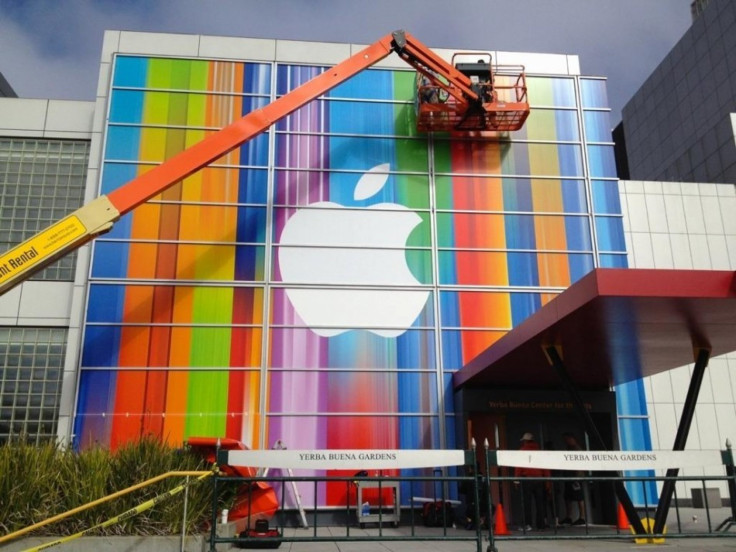Apple Without Steve Jobs: How Tim Cook, Jony Ive And Craig Federighi Are Using Collaboration To Battle Android

Android is dominating the world. At least it seems that way when you look solely at the numbers: Google’s mobile operating system runs on almost 80 percent of the world’s smartphones and almost two-thirds of all tablets in the world, according to IDC. So what is Apple to do, especially without its visionary leader Steve Jobs to help pave the way for the future?
Rather than focus on outside competition (Android and Samsung) or even internal divisions, Apple CEO Tim Cook, lead designer Jonathan “Jony” Ive and Software Engineering VP Craig Federighi (aka “Hair Force One”) are pushing the company forward with cooperation and collaboration.
“Successful collaboration, in your mind, could be that your opinion is the most valuable and becomes the prevailing sort of direction,” Ive said in an interview with Bloomberg Businessweek. “That’s not collaborating.”
In October 2012, Apple’s executive board was shaken by the sudden removal of Scott Forstall, the senior vice president of iOS who was personally appointed by Jobs. Forstall’s responsibilities were split between Apple’s other senior VPs, including Ive, who took over for all design aesthetics across hardware and software lines (you can see his fingerprints all over iOS 7); Eddy Cue, who took on all online services including Siri and Maps; and Federighi, who took on iOS engineering in addition to OS X.
In an earlier interview with Businessweek, Cook explained how the executive shake-up was part of an effort to take collaboration at Apple “to another level.”
“You look at what we are great at,” Cook said. “There are many things. But the one thing we do, which I think no one else does, is integrate hardware, software and services in such a way that most consumers begin to not differentiate anymore. They just care that the experience is fantastic. So how do we keep doing that and keep taking it to an even higher level? You have to be an A-plus at collaboration. And so the changes that we made get us to a whole new level of collaboration. We’ve got services all in one place, and the guy that’s running that has incredible skills in services, has an incredible track record, and I’m confident will do fantastic things.”
To Cook, Ive and Federighi, collaboration isn’t about agreeing with each other all the time (Forstall was known to be quite the divisive leader). It’s about being detail-oriented and constantly bringing new ideas to the table to improve the interplay between hardware, software and the consumer.
“I don’t think we ever talked about our roles,” Ive said. “We talked about how can we most effectively extend the collaboration that always existed.”
In the same way the iPhone and iOS work together seamlessly, Cook hoped to instill this same powerful chemistry within Apple as a means to strengthen all of the company’s products, rather than a few. Federighi, who had worked almost exclusively on the Mac team until 2012, had a chance to apply his engineering expertise to the mobile ecosystem with iOS 7. And Ive, who had previously only designed Apple hardware like the iPod and iPhone, got his first shot at rewriting the rules of the iPhone’s software, along with Federighi.
"When we sat down last November (to work on iOS 7), we understood that people had already become comfortable with touching glass, they didn't need physical buttons, they understood the benefits," Ive told USA TODAY. "So there was an incredible liberty in not having to reference the physical world so literally. We were trying to create an environment that was less specific. It got design out of the way."
With Ive handling the design of iOS -- he replaced the many kitschy skeuomorphic elements like the green felt from the Game Center with a flatter and cleaner no-nonsense design – Federighi was tasked with making the interface feel fluid, effortless, but most importantly, invisible.
"This is the first post-Retina (Display) UI (user interface), with amazing graphics processing thanks to tremendous GPU (graphics processing unit) power growth, so we had a different set of tools to bring to bear on the problem as compared to seven years ago (when the iPhone first launched)," Federighi told USA TODAY. "Before, the shadowing effect we used was a great way to distract from the limitations of the display. But with a display that's this precise, there's nowhere to hide. So we wanted a clear typography.”
“Yes, we wanted to defer to the content, and just get out of the way,” Ive added.
Apple’s collaborative efforts are clearly making an impact – iOS 7 adoption is already outpacing last year’s release – but it’s also having a clear effect on the company’s chief rivals. Mobile companies are finally recognizing the importance of tightly integrated hardware and software. Google purchased Motorola Mobility for $12.5 billion in 2011 to develop Android smartphones in-house, and Microsoft recently purchased Nokia’s phone business for $7.2 billion to build Windows Phone devices in-house.
“Everybody is trying to adopt Apple’s strategy,” Cook said. “We’re not looking for external validation of our strategy, but I think it does suggest that there’s a lot of copying, kind of, on the strategy and that people have recognized that importance.”
Apple may never win the game of global market share -- Android is free and open, while Apple's iOS is closed and expensive -- and it may never be the stock market darling Wall Street oh-so-wants it to be. But while Steve Jobs is no longer alive to direct the company's activities, Apple is finally beginning to understand that replacing a visionary isn’t a solo job; it takes a village.
© Copyright IBTimes 2024. All rights reserved.





















